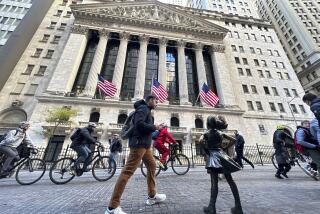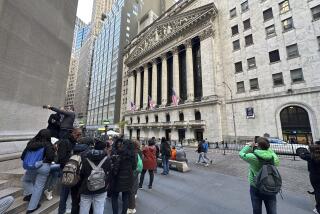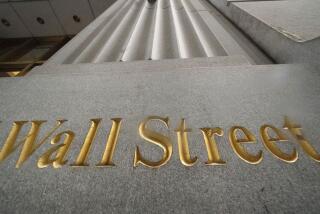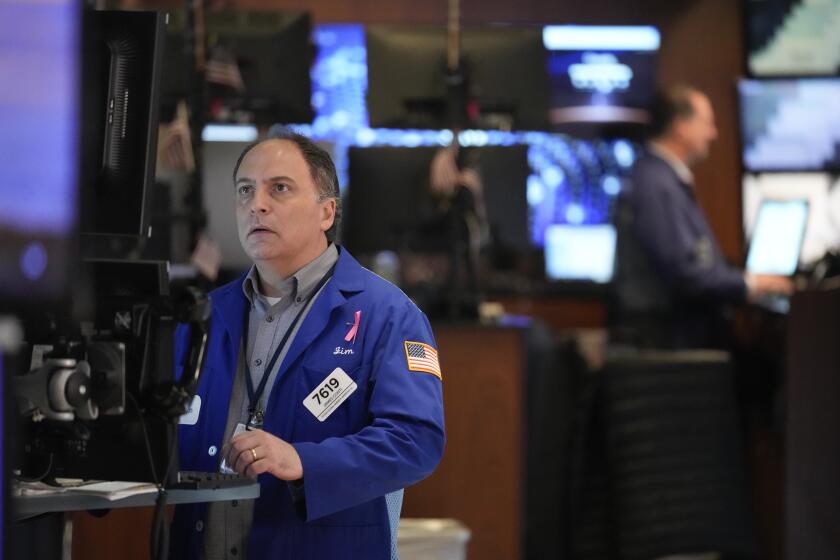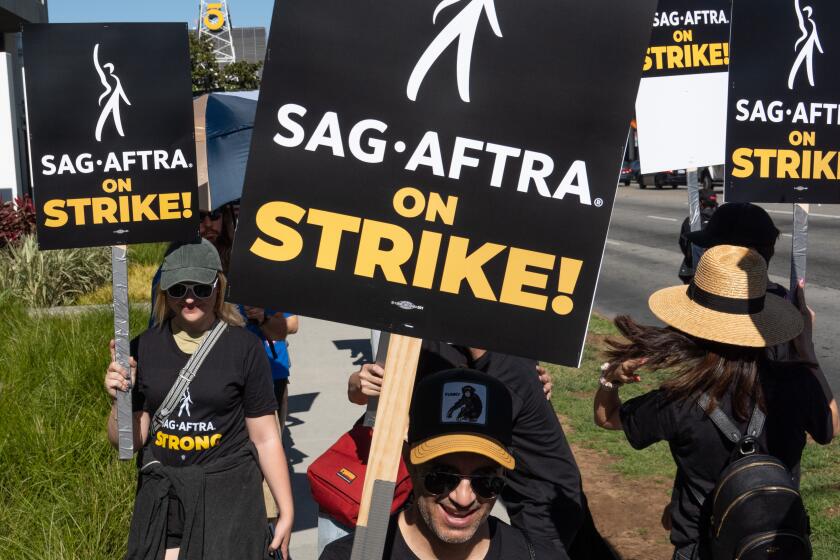Stock markets end second quarter on positive note
Wall Street finished the second quarter with a flourish, with stocks rallying strongly for a fourth straight day on renewed hopes the economy will get its mojo back.
The Dow Jones industrial average jumped 152.92 points, or 1.3%, to close at 12,414.34 on Thursday, which left it up 0.8% for the quarter and 7.2% for the first half.
Broader market indexes also posted hefty gains for the session after a report on Chicago-area manufacturing showed a brisk rebound in June from May. That reinforced the idea that the economy’s spring “soft patch” could give way to stronger growth this summer.
Most stock indexes, however, were modestly lower for the quarter, though up for the first half of the year.
The Standard & Poor’s 500 index rose 13.23 points, or 1%, to 1,320.64 on Thursday. It was down 0.4% in the three months and up 5% in the half.
The Nasdaq composite closed at 2,773.52, up 1.2% for the day. For the three months the Nasdaq slipped 0.3%; its year-to-date gain: 4.6%.
Stocks began the year with a powerful rally, buoyed by accelerating U.S. job growth and by a huge injection of money into the financial system via the Federal Reserve’s Treasury-bond-buying program.
The market then struggled as oil prices soared in mid-February amid massive unrest in the Middle East.
Japan’s devastating earthquake and nuclear-power-plant crisis in March triggered a plunge in markets worldwide, but it was short-lived. Wall Street quickly recovered as U.S. economic data continued to point to solid growth.
Most major U.S. stock indexes climbed through April, reaching their peaks April 29. The Dow at that point was at 12,810.54, up 10.6% for the year.
The market then slumped as U.S. economic reports began to point to fresh weakness, with high oil prices sapping consumer and business spending. What’s more, Europe’s government-debt crisis deepened, as it became clear that Greece either would need another bailout by the rest of the continent or would face default.
The Dow fell for six straight weeks through June 10. But as pullbacks go, this one was mild: At its lowest point in June the Dow was down a modest 7.1% from its April 29 peak. Losses in most broader indexes also came to less than 10% from their spring highs before share prices stabilized in the last two weeks.
So the decline — assuming it’s over — didn’t even qualify as a garden-variety “correction” in a bull market. A typical correction knocks 10% to 20% off market indexes.
“The 2008 [bear market] still is so fresh in people’s memories,” said Sam Stovall, investment strategist at Standard & Poor’s in New York. Investors may fear the worst whenever stocks start to fall, he said, even though periodic pullbacks in bull markets are normal.
Stocks were supported over the last few weeks as oil prices declined, giving consumers a break at the pump. Crude ended Thursday at $95.42 a barrel, up 65 cents for the day but down 16% from the peak of $113.93 on April 29.
This week’s stock rally worldwide was fueled in part by expectations that the Greek Parliament would approve austerity measures that were a precondition of another euro-zone bailout. Parliament approved that bill Wednesday despite vicious street protests.
Wall Street analysts said the surge in equities also stemmed from quarter-end portfolio shuffling, as some big investors pared bond holdings and beefed up on stocks.
In a reversal of the trend for much of the spring, Treasury bond yields have jumped since Friday. The 10-year T-note ended Thursday at 3.16%, up from 3.12% on Wednesday and 2.86% a week ago.
With the Fed’s $600-billion bond purchase program completed Thursday, some bond market players are fearful that yields might continue to snap back.
But the stock market might be OK with that, experts said, if the report on Chicago manufacturing Thursday was a prelude to more data showing that the economy is getting a second wind.
